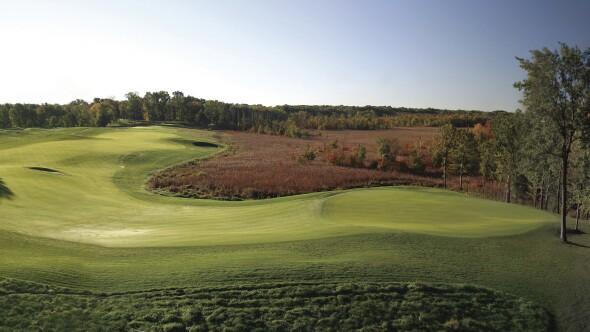Thousand Oaks Golf Club

About
| Tee | Par | Length | Rating | Slope |
|---|---|---|---|---|
| Black | 72 | 7128 yards | 74.6 | 144 |
| Blue | 72 | 6677 yards | 72.3 | 139 |
| White | 72 | 6137 yards | 70.0 | 136 |
| White (W) | 72 | 6137 yards | 75.4 | 137 |
| Gold | 72 | 5742 yards | 68.1 | 119 |
| Red | 72 | 5328 yards | 69.4 | 123 |
| Hole | 1 | 2 | 3 | 4 | 5 | 6 | 7 | 8 | 9 | Out | 10 | 11 | 12 | 13 | 14 | 15 | 16 | 17 | 18 | In | Total |
|---|---|---|---|---|---|---|---|---|---|---|---|---|---|---|---|---|---|---|---|---|---|
| Black M: 74.7/146 | 408 | 417 | 211 | 443 | 531 | 465 | 161 | 380 | 530 | 3546 | 640 | 431 | 505 | 391 | 368 | 182 | 408 | 206 | 451 | 3582 | 7128 |
| Blue M: 73.2/143 | 398 | 389 | 179 | 428 | 507 | 449 | 142 | 356 | 517 | 3365 | 553 | 385 | 485 | 372 | 353 | 152 | 388 | 192 | 432 | 3312 | 6677 |
| White M: 70.5/141 W: 76.9/146 | 364 | 367 | 163 | 407 | 483 | 427 | 124 | 307 | 493 | 3135 | 505 | 344 | 461 | 337 | 327 | 132 | 337 | 168 | 391 | 3002 | 6137 |
| Gold M: 68.5/137 W: 74.1/139 | 349 | 287 | 138 | 394 | 456 | 385 | 125 | 289 | 415 | 2838 | 499 | 331 | 441 | 324 | 335 | 129 | 322 | 146 | 377 | 2904 | 5742 |
| Red M: 65.7/125 W: 70.4/129 | 307 | 288 | 134 | 353 | 454 | 340 | 112 | 271 | 419 | 2678 | 475 | 308 | 423 | 304 | 251 | 106 | 295 | 147 | 341 | 2650 | 5328 |
| Us kids 2 M: 61.9/110 W: 64.3/112 | 205 | 245 | 128 | 233 | 335 | 249 | 101 | 256 | 310 | 2062 | 346 | 204 | 293 | 222 | 251 | 103 | 205 | 135 | 241 | 2000 | 4062 |
| Us kids 1 M: 58.3/102 W: 59.4/102 | 152 | 186 | 63 | 193 | 275 | 215 | 101 | 171 | 251 | 1607 | 275 | 157 | 250 | 169 | 181 | 103 | 150 | 74 | 154 | 1513 | 3120 |
| Handicap | 13 | 7 | 15 | 3 | 9 | 1 | 17 | 11 | 5 | 2 | 16 | 14 | 10 | 8 | 18 | 6 | 12 | 4 | |||
| Par | 4 | 4 | 3 | 4 | 5 | 4 | 3 | 4 | 5 | 36 | 5 | 4 | 5 | 4 | 4 | 3 | 4 | 3 | 4 | 36 | 72 |
| Handicap (W) | 13 | 7 | 17 | 5 | 11 | 3 | 15 | 9 | 1 | 6 | 14 | 8 | 12 | 10 | 18 | 2 | 16 | 4 |
Course Details
Rentals/Services
Practice/Instruction
Policies
Food & Beverage
Bar, Snacks, GrillAvailable Facilities
Clubhouse, Banquet FacilitiesReviews
Terrific Rees Jones Course
Played the course prior to going public as well as after. May be my favorite Reese Jones course I have played. Hilly terrain is used well to create many signature holes. Greens can be repetitive, but conditions were perfect.
The beat in GR
I've been fortunate enough to play Thousand Oaks for years and having played all around the state, I can honestly say this is one of the best courses in Michigan. From the great course design, great conditions, and a super friendly staff, you will find no better golf experience around. It's a golf course that will make you use all 14 clubs and at times ,are you think you're in. Or there Michigan. It's well worth the visit!
loved this course and will come back and play it again
one of the best golf courses i have played this year.Considering how late in the season it is the crews have maintained this course in excellent condition and hardly any leaves on the fairway at all.
A must experience for every good golfer
This course dazzels you with Gods creation each and every hole. The elevation changes are breathtaking and its easy to get off your game just gazing at the beauty of the course. I'm going back as soon as possible just to authenticate the scenery still etched in my mind.
Very challenging with multiple tees available
Normally a pricy club but with "golfnow" it's very affordable. A picturesque and panoramic course beautifully weaved between wetland and forest. A clubhouse and facilities that serve any patron's needs. The practice range is a little weird, very down hill. Which one will have many down hill AND very up hill shots. Premium on tee shots throughout. Large undulating greens. There's a few birdy holes but mostly just keep it in play and be ready/comfortable with bogies. Enjoy!
Worth the price from GolfNow.com
NOrmal rate is $67 for 18. We paid $40 plus the $8 fee for using GolfNow.com. From the time we drove up until we left we were treated with courtesy and a smile from everyone (including the young people who worked there). Tee times were ready to go when they said they would be. Carts are equipped with built-in GPS screens and other than the constant advertising were beneficial in giving yardage and possible trouble spots. The greens had been plugged 3 weeks prior so there was some putts which we felt were deflected because of them. Still, the greens were fast and very receptive to holding our shots. The course has almost NO flat spots other than the teeing areas! Elevation changes are rampant and just added to the overall enjoyment of playing the course. Fairways were fair but you didn't want to stray to far into the rough which was thick.
The layout is such that you seldom see anyone else on the course unless you catch up to them because they've been looking for a lost ball. The course name is Thousand Oaks but it could also be Million Trees and is one of the reasons you don't see others. There's only a few concerns I have about playing there. 1) None of the cart paths are close to the greens and, because of the design you find yourself walking down hills (often quite steep) to get to the greens and then back up them to the carts. Wet grass was a slip and fall concern for two of our members and one actually did early on. 2) In an effort to protect landing areas short of the greens you cannot drive up to most holes any closer than what seemed like 50 yards. I don't think this would be a "walking" course. Well worth the money!
A "Must Play"
Beautiful course, beautiful clubhouse. If you are looking for a challenge, you found it. Difficult greens, excellent fairways, and beautiful scenery.
Definitely worth playing once.
Lots of elevation change, not an outstanding design
I thought the course was very playable, and quite forgiving. Most of the greens are shaped like bowls that funnel poorly struck approval shots toward the middle of the green.
I did not think this design was anything to write home about beyond the significant elevation change of the land.
Vacation near home!
My wife and I love to vacation up north, to play golf and go boating. She took this past Monday off from work and we played Thousand Oaks. We were surprised at how much Thousand Oaks feels like the northern courses we love to play near Traverse City and Gaylord!
Premiere public course in Grand Rapds
I hadn't played Thousand Oaks in a few years due to the price ($87) and because they only permit members on weekends. However, the deal I was able to get from Golfnow was incredible and unable to pass up.
The course is as I remember it - the best public access course in Kent County. Up north feel with each hole bordered on all sides by woods or wetlands for maximum privacy. Rolling terrain. Fast greens. Higly recommended.
Beware however - we were told in the clubhouse that because we booked via Golfnow, the golf course had the right to move our tee time up or back a half hour without notice to us ahead of time, so show up plenty early. We were moved back 10 minutes, so no biggee.
this course has great features
this course was very fun to play well maintained and challenging my friend and never played there before and was very happy at the end of the round would play this course again
course was great. delayed tee time
course was in great shape and enjoyed it. only complaint was they moved my selected tee time of 8:10 am to 8:40 am. didn;t know they could do that.
One of the best courses I have played
We played in the spring and the course was well manicured. I cannot imagine how nice the course would be in the summer. I wanted to give the course 4.5 stars, but it was not an option. IMO 5 stars is tour grade course, 4 stars being a really solid public course. In this case I rounded up because I consider Thousand Oaks better than a solid course. It is a great course. Go play it
First time played. Too early in the season to enjoy beauty of the course. Will return later in the season.
First time played. Too early in the season to enjoy beauty of the course. Will return later in the season.
Fast Greens
It was a very nice course with fast undulating greens. There were some beautiful elevated tees. There were many elevated, well bunkered greens, which made it very challenging. We enjoyed it very much and will definitly be back.





























